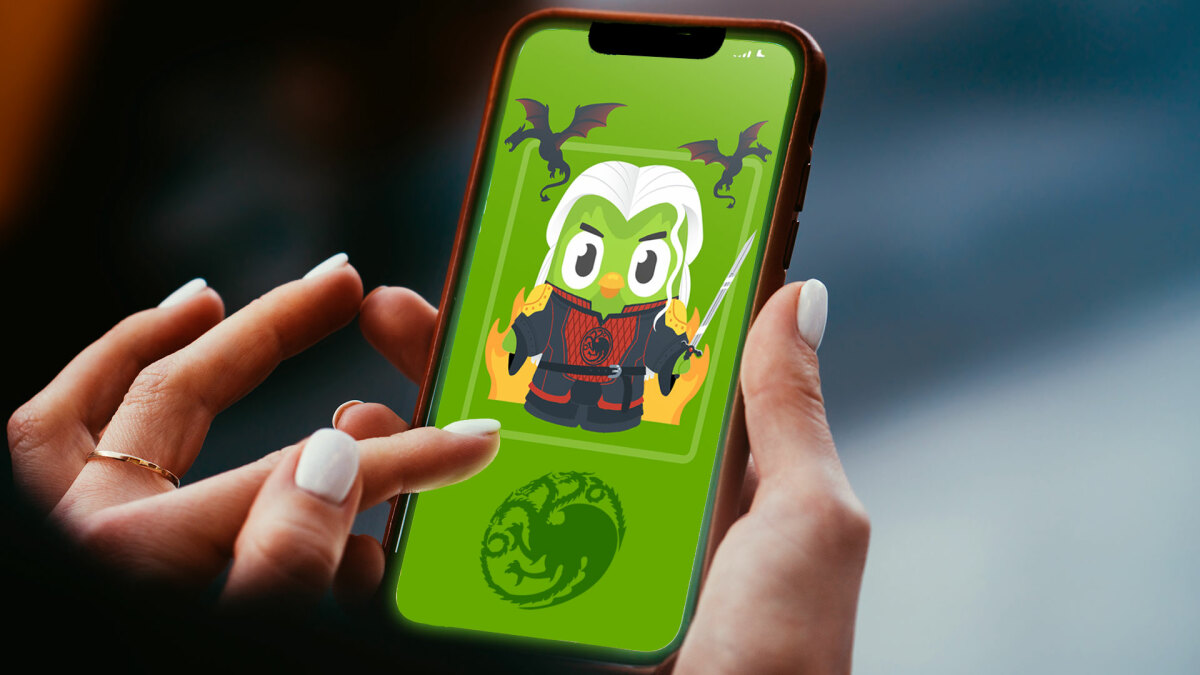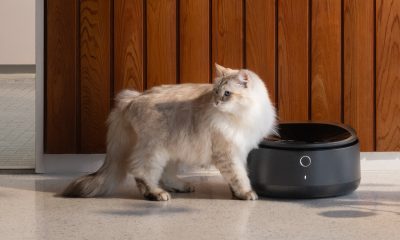Entertainment
Learning High Valyrian on Duolingo brought me nothing but joy in 2022

2022 was the year of House of the Dragon. We read the source material, memorized the Targaryen family tree, and obsessed over small — but important — details. By the time the Season 1 finale reared its dragon-scaled head, I’d spent so much time thinking about Westeros that there was no way I was ready to let it go. So I set myself a new goal: to master High Valyrian, the Targaryens’ mother tongue.
High Valyrian may have started as a few phrases in George R.R. Martin’s A Song of Ice and Fire series, but it is now an actual language with its own rules and expansive vocabulary. That’s all thanks to linguist David J. Peterson, who created High Valyrian and Dothraki for Game of Thrones.
Since High Valyrian was built by Peterson as opposed to emerging naturally over time, that makes it an example of a constructed language, or “conlang.” Just like with natural languages, it’s entirely possible to learn a conlang. For example, you can find books that teach Sindarin from Lord of the Rings and Klingon from Star Trek. Peterson himself has written Living Language Dothraki, a conversational language course for Dothraki. However, if you want to learn High Valyrian, you need look no further than language learning app Duolingo, which carries a High Valyrian course created by Peterson. It is one of three conlangs you can learn on Duolingo, the other two being Esperanto and Klingon.
After starting to learn High Valyrian in October, I’ve discovered that it’s all my House of the Dragon-loving heart needs to weather the long wait before Season 2. Yes, I miss seeing Rhaenyra and her Targaryen clan every Sunday, but with these lessons I can set aside a few minutes every day to imagine I’m having a conversation with them. Of course, in House of the Draon their High Valyrian conversations typically cover complex familial dynamics and political plotting, whereas my level of knowledge skews towards the basics like “hello and goodbye” (Rytsas se geros ilas). Still, a girl can dream!
How did High Valyrian wind up on Duolingo?

Promotional materials from Duolingo about their High Valyrian course.
Credit: Duolingo
Originally, Duolingo reached out to Peterson about creating a course in Dothraki. Since he’d already released a book about Dothraki, he suggested High Valyrian instead. The first version of the course launched in July 2017. It has since gone through two updates: one in 2019, and one in 2022, prior to the release of House of the Dragon. According to Duolingo in data they shared with me over e-mail, over 3.2 million learners worldwide have studied High Valyrian as of the course’s launch.
2022 was a particularly big year for High Valyrian on Duolingo. A blog update from Duolingo in July of 2022 said that the course had 514,000 active users. Then, from September to October, while House of the Dragon was airing, Duolingo revealed that it saw a 56 percent increase in High Valyrian learners.
There’s been more interest in High Valyrian than there’s ever been.
“There’s been more interest in High Valyrian than there’s ever been… Even before, High Valyrian never had this level of interest around it. Now it does,” Peterson said in a video call with Mashable. “And honestly, I think it comes down to the way that it’s used [in House of the Dragon], the way you can actually see the back and forth. Because even in Game of Thrones, it was something for Daenerys giving speeches or laying down announcements, very magisterial. Here [in House of the Dragon], you can actually hear how it is a language.”
House of the Dragon puts High Valyrian front and center.
My desire to learn High Valyrian wouldn’t have been so pronounced had the language not featured far more prominently in House of the Dragon than it did in Game of Thrones. The increase in High Valyrian usage in House of the Dragon comes down to the context of the show: Here, hundreds of years before Game of Thrones, the Targaryens are still in power, and still keeping the language of their ancestors from Old Valyria alive.
Peterson noted that the High Valyrian we see in the show “is actually closer to what you hear with Daenerys and Game of Thrones than it would be to the language you would have heard spoken around the time of the Doom [of Valyria].”
He also pointed out that while we do see more High Valyrian speakers in House of the Dragon, it is by no means a common language in Westeros. “The Targaryens and families like the Velaryons, they’re keeping up High Valyrian as a spoken language,” Peterson said. “But you can already see that maybe it’s starting to wane with the youngest kids. You can see that they’re clearly not being brought up as fluent as Rhaenyra was.”
Elsewhere, the only other people in Westeros who would be speaking High Valyrian would be the Dragonkeepers and the Maesters, who would teach it to the wealthiest people in the realm. “But if they don’t have any connection to Valyria, it’s not like they think of [High Valyrian] as important. So it’s just this kind of literary, scientific, highbrow language for everybody else in Westeros,” explained Peterson.
Peterson described the level of High Valyrian taught in the Duolingo course as being “post-Doom, but a little bit more proper and standard, so closer to Aegon’s conquest [of Westeros].” Of course, as with any language, there are several nuances and exceptions to rules that you might not learn until you’ve studied the language for a long time at a high level. But while the Duolingo course might not get us to that point in High Valyrian as of now, it’s still a great starting point to dive into the nitty-gritty basics of the language.
What can you expect to learn in the High Valyrian Duolingo course?

Promotional materials from Duolingo about their High Valyrian course.
Credit: Duolingo
Like with all Duolingo courses, the High Valyrian course starts by teaching you the basics of a language and building on those. The first vocabulary words you learn include man (vala), woman (ābra), girl (riña), and boy (taoba). Later, you’ll learn about High Valyrian’s four genders — solar, lunar, aquatic, and terrestrial — and encounter words like korze (meaning long sword) or sēter (meaning spell or enchantment).
I definitely get the biggest kick whenever these fantasy-centric words are peppered in along more “standard” vocabulary. Usually, when I think of learning a language, I imagine that phrases we learn early on will include “How are you?” and “Where’s the bathroom?” With the High Valyrian course, I learned how to say “I have dragons” (Zaldrīzī eman) and “They love the Iron Throne” (Āegenkon Dēmalion jorrāelzi). And honestly? I love it. The regular fantasy references further immerse me in the language and remind me where High Valyrian comes from — a context that was immensely important to Peterson while constructing the course.
“Valyrian is essentially two things,” he explained. “It is an actual language. It’s something that you can use today, right now. But it’s also a set piece. That is, it’s a language that is supposed to have a fictional history… I’m very clearly setting a level of instruction at a particular time in this fictional history.”
Valyrian is essentially two things. It is an actual language… But it’s also a set piece.
He continued, “When I first started working with Duolingo, they said, ‘Here, you can use some of these other courses as models.’ And it’s [units] like traveling at an airport, going to a restaurant, calling a taxi. These are very useful things, but it completely doesn’t exist in this fictional universe. And that’s the whole point of the language, is to serve this fiction.”
Peterson hinted that maybe one day he’d create a bonus skill where we could learn to discuss levels of technology that don’t exist in Westeros yet — but none of those words or phrases would really fall in Valyrian. “I had to find other things that would be useful or common from that time period,” Peterson said, hence the swords and sorcery. “It might not be very useful to a modern speaker, but at least it’s interesting and it fits the world.”
The High Valyrian Duolingo course is full of treats for Game of Thrones fans.
As you work through the High Valyrian course on Duolingo, you’ll begin to pick up pieces of High Valyrian dialogue from the show, including the iconic “Valar morghulis, valar dohaeris.” The first names you’ll use in exercises include Daenerys, Viserys, and Jon (translated to Iōnos), so you’ll be able to say phrases like “Daenerys is a friend of the dragons” in no time.
Peterson tried to fit as much Game of Thrones dialogue into the course as he could. However, this endeavor became much harder with House of the Dragon, which saw more complicated conversational High Valyrian. “I’m going to keep adding to [the course] as long as they’ll let me, so hopefully we’ll get there eventually, but there’s some pretty tricky stuff in the House of the Dragon dialogue,” he said.
His biggest challenge? Translating the phrase “would that it were,” which shows up in episode 4. It took Peterson several weeks to come up with the High Valyrian approximation “Hegnīr iksos jaelan,“ essentially meaning “I wish it were that way.” If you want more translations of House of the Dragon‘s complex High Valyrian conversations, Peterson posts them, episode by episode, on Archive of Our Own.
I toggle between telling people that Paris is a beautiful city and letting them know that my dragons are extremely powerful.
I haven’t run into any phrases nearly that complicated in the Duolingo course. I’m still working through the “Intro to High Valyrian” section. However, I’ve found that my absolute favorite thing about learning High Valyrian is how connected it makes me feel to the shows and books. Because of it, I’m thinking more about the history of Westeros and the context of the language. I’m listening harder to the House of the Dragon‘s High Valyrian in order to catch snippets of vocabulary that I might recognize. When watching the Season 1 finale for the first time, I cheered when Aemond called Lucerys “taoba,” because I knew even without any subtitles that it meant “boy.” (Don’t worry, that cheering stopped as soon as Vhagar chomped down on Lucerys — I’m not a monster!)
Learning High Valyrian has also offered a deeper connection with my friends who love House of the Dragon. We’ll text each other phrases that make us laugh because of their significance in the show. Some of my favorites include:
Oh no…

Credit: Screenshot: Duolingo
Ned spreading misinformation about everyone’s favorite bastard.

Credit: Screenshot: Duolingo
Hey, that’s the name of the show!

Credit: Screenshot: Duolingo
It all comes back to language learning.
Aside from the fantasy references and the meme potential of certain phrases, the High Valyrian course’s greatest accomplishment is the fact that, like the mighty flames of Syrax (or Vhagar, or Caraxes), it has re-ignited my joy about learning a language. Every morning I get pumped up to spend a bit of my day talking about dragons and spells and thrones. This excitement stems from both the fun of High Valyrian and Duolingo’s gamified approach to teaching, which incentivizes users to maintain a daily learning streak.
Duolingo’s streak system and gamification actually intrigued Peterson well before he had began working on the High Valyrian course. “More important than anything else when it comes to language instruction is you have to engage with it every day,” Peterson said. “You have to just keep up with it and keep doing it. Duolingo has found a way to get people to want to do that, which is the hardest part.”
Since you can work on multiple courses at once in Duolingo, I’ve used my daily forays to learn High Valyrian to simultaneously brush up on my French. Now, I toggle between telling people that Paris is a beautiful city and letting them know that my dragons are extremely powerful. It’s truly the greatest of both worlds, as well as a welcome chance to re-visit language skills I’d unfortunately let slide the past few years. For that chance, and for the opportunity to get to know Westeros a little better, I have one thing to say: Kirimvose. (Thank you.)
-

 Business7 days ago
Business7 days agoUnitedHealth says Change hackers stole health data on ‘substantial proportion of people in America’
-

 Business6 days ago
Business6 days agoTesla’s new growth plan is centered around mysterious cheaper models
-

 Business5 days ago
Business5 days agoXaira, an AI drug discovery startup, launches with a massive $1B, says it’s ‘ready’ to start developing drugs
-

 Business5 days ago
Business5 days agoUK probes Amazon and Microsoft over AI partnerships with Mistral, Anthropic, and Inflection
-

 Entertainment3 days ago
Entertainment3 days agoSummer Movie Preview: From ‘Alien’ and ‘Furiosa’ to ‘Deadpool and Wolverine’
-

 Business6 days ago
Business6 days agoTwo widow founders launch DayNew, a social platform for people dealing with grief and trauma
-

 Entertainment6 days ago
Entertainment6 days agoTesla’s in trouble. Is Elon Musk the problem?
-

 Business4 days ago
Business4 days agoPetlibro’s new smart refrigerated wet food feeder is what your cat deserves




























